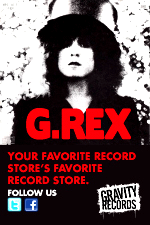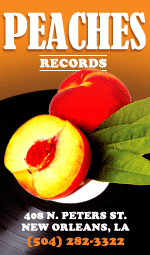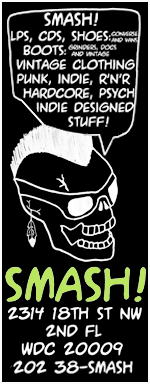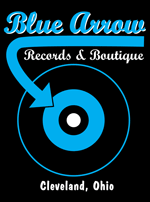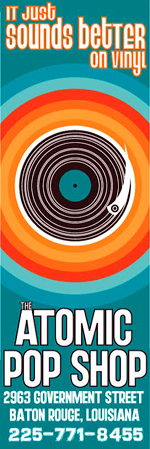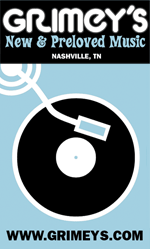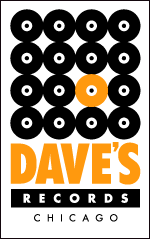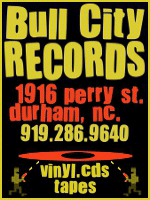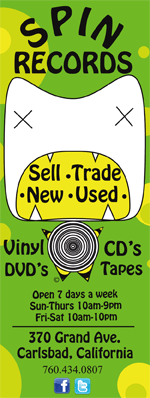
Consisting of highly skilled enthusiasts, The Blasters stand tall amongst the very strongest exponents of the stripped down and wild sound that shaped the 20th century heyday of what the band described as American Music. For an extended taste of this outfit’s rare talents, just get in line on Record Store Day Black Friday November 29 for a copy of Over There, Live at the Venue, London – The Complete Concert, which expands a sharp six-song live EP originally released in 1982 to 23 tracks spread across four sides of vinyl. But heads up; only 1,500 copies of this double set were pressed by Liberation Hall, so interested parties should prepare to be disappointed. Demand will definitely exceed supply.
Formed in Downey, California in 1979 by vocalist-guitarist Phil Alvin, lead guitarist Dave Alvin, bassist John Bazz, and drummer Bill Bateman, by the time The Blasters recorded their self-titled second album released by Slash Records in 1981, they’d added boogie-woogie piano specialist and former Canned Heat member Gene Taylor, baritone saxophonist Steve Berlin (a contemporary from the Los Angeles scene) and veteran tenor saxophonist Lee “Walkin’ With Mr. Lee” Allen to the lineup. Upon landing in England to support Nick Lowe, they were a well-oiled machine just bursting with spontaneity and energy.
Perhaps the key component in The Blasters’ artistic success is that they couldn’t sit stylistically still for very long. Over There’s complete performance spans rockabilly, rhythm & blues, country, swamp blues, and soul. But on the downside (for the band; certainly not for listeners), this sheer diversity likely limited their commercial potential. Doing one thing repeatedly, e.g. the neo-rockabilly of The Stray Cats, increases the chances of breaking through, if only briefly. The Blasters had some chart success, but they never took a ride on the flash in the pan rollercoaster.


 By the time I became acquainted with them in the mid-‘80s, XTC was essentially a critics’ fave and one that was largely functioning as an album band. This was the era of Skylarking, and while “Dear God,” the b-side of that LP’s first single “Grass,” kicked up quite a bit of dust via MTV and even replaced “Mermaid Smiled” on the US version of the disc, in the US it only managed to land on a now defunct barometer of radio play named the Billboard Album Rock Chart, where it found modest success.
By the time I became acquainted with them in the mid-‘80s, XTC was essentially a critics’ fave and one that was largely functioning as an album band. This was the era of Skylarking, and while “Dear God,” the b-side of that LP’s first single “Grass,” kicked up quite a bit of dust via MTV and even replaced “Mermaid Smiled” on the US version of the disc, in the US it only managed to land on a now defunct barometer of radio play named the Billboard Album Rock Chart, where it found modest success.
 The first inapt tag I’ve read applied to Love Has Many Faces is “career-spanning,” its usage positing Mitchell’s musical activity beginning with 1971’s Blue. Indeed, nothing from ‘68’s Joni Mitchell/Song to a Seagull, ‘69’s Clouds or ‘70’s Ladies of the Canyon is included here, and it leads me to a minor quibble in the casual use of “greatest-hits” to describe this collection; a few of her larger singles did make the cut, but absent is “Big Yellow Taxi” from Ladies or “Help Me” from ‘74’s Court and Spark.
The first inapt tag I’ve read applied to Love Has Many Faces is “career-spanning,” its usage positing Mitchell’s musical activity beginning with 1971’s Blue. Indeed, nothing from ‘68’s Joni Mitchell/Song to a Seagull, ‘69’s Clouds or ‘70’s Ladies of the Canyon is included here, and it leads me to a minor quibble in the casual use of “greatest-hits” to describe this collection; a few of her larger singles did make the cut, but absent is “Big Yellow Taxi” from Ladies or “Help Me” from ‘74’s Court and Spark.




 The latter portion of the 1960s is loaded with singer-songwriters whose work is best known through the interpretations of others. Many of these cult figures are folky in comportment, but even as Nyro recorded her debut for Verve’s Folkways imprint (later renamed Verve Forecast) and made a crucial early song sale to Peter, Paul and Mary (“And When I Die,” later butchered by Blood, Sweat & Tears), she was a pop stylist of pronounced sophistication.
The latter portion of the 1960s is loaded with singer-songwriters whose work is best known through the interpretations of others. Many of these cult figures are folky in comportment, but even as Nyro recorded her debut for Verve’s Folkways imprint (later renamed Verve Forecast) and made a crucial early song sale to Peter, Paul and Mary (“And When I Die,” later butchered by Blood, Sweat & Tears), she was a pop stylist of pronounced sophistication.



 If the team-up of Daryl Hall and Robert Fripp remains an unlikely pairing from seemingly disparate areas of the ‘70s rock landscape, after some consideration their creative union shouldn’t really be designated as a case of strange bedfellows. The key to understanding how these two ended up in the same studio lies in getting beyond the surface perception of Fripp as a prog-rock outlier and Hall & Oates as simply a hit machine.
If the team-up of Daryl Hall and Robert Fripp remains an unlikely pairing from seemingly disparate areas of the ‘70s rock landscape, after some consideration their creative union shouldn’t really be designated as a case of strange bedfellows. The key to understanding how these two ended up in the same studio lies in getting beyond the surface perception of Fripp as a prog-rock outlier and Hall & Oates as simply a hit machine.
















